OM OS
CENTRO ELEUSIS er et psykologisk institut, som beskæftiger sig med Virksomhedspsykologi, Sportspsykologi og Indlæringspsykologi. Indenfor Indlæringspsykologi området, tilbyder vi accelererende sprogkurser igennem den psykologiske metode som hedder Hypnagologi (Copyright).
Den Hypnagologiske metode, som er en logisk konsekvens af Den Suggestologiske metode, udviklet hovedsagligt ved Københavns Universitet i slutningen af 70´erne, har vi brugt på Costa del Sol siden 1990, med deltagere som kommer fra hele Europa samt andre kontinenter.
Vi kan garentere at vores Hypnogologiske metode til sprogtræning giver optimale resultater.
Denne type undervisning er ikke længere under eksperimentering. Resultaterne af indlæringshastigheden på en afslappende facon, har vist hvor nemt det er at lære et nyt sprog, uanset hvilken alder, uddannelsesmæssig baggrund, osv., den enkelte person har. Inklusiv personer som betragtede sig selv som ”handicappede” til at lære et nyt sprog (med ordblindhed, ”mangel på musikalsk øre”, ”vanskeligheder med koncentration”, samt mange andre fordoms myter) taler idag målsproget uden problem igennem den Hypnagologiske metode.
I forbindelse med alder, så har personer fra 12 til 82 år gammel, deltaget i vores accelererende kurser siden 1990. Det viser uden tvivl, effektiviteten af denne videnskabelige metode. Kursernes optimale resultater, har i løbet af mere end 30 år bevist, at en hvilken som helst VOKSEN, fra hvilken som helst profession eller aktivitet, fra hvilket som helst uddannelsesniveau eller nationalitet, kan lære et nyt sprog i løbet af et MEGET KORT TIDSRUM.
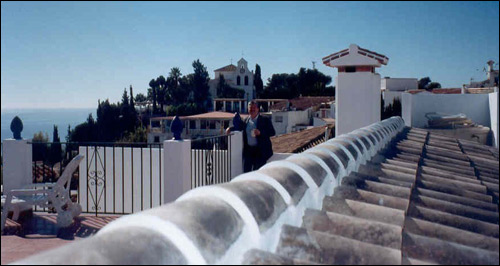
Vi betragter ”sproget”som adfærd, nøjagtigt som at cykle eller køre bil. Det vi gør imens vi underviser er, som VERBAL ADFÆRD, at skabe vanen til at opbygge spontane og kreative sætninger på det nye sprog.
Det vigtigste princip indenfor den Hypnagologiske metode, er at undervise det nye sprog på en sådan måde, at hele individets personlighed kan bruge det som et ”værktøj” til kommunikation indenfor hans/hendes nære omgivelser. Derfor er psykologiske teknikker som NLP (Neurolinguistic Programming) med brug af visuel hukommelse, auditiv hukommelse og kinetisk hukommelse, væsentlige når man skal accelerere indlæringsprocessen. Ligeledes, til at opnå selvtillid til at tale og til at tage blokeringerne (fordoms myter fra deltagernes side angående sprogindlæring) væk så hurtigt som muligt, bruger vi Eriksons forstærknings teknikker, Transaktionsanalyse og Gestalt Psykologi. Det afhænger altid af den individuelle problematik, som den enkelte deltager har. Dvs., den Hypnagologiske metode integrerer sig til individets måde at lære. Det er nøjagtigt det modsatte af de konventionelle metoder, som fejlagtigt prøver at ”integrere” individet til deres ”metode” eller ”tekstbog”.
At arbejde med personens ”helhed”, har gang på gang vist, at indlæringsprocessen foregår hurtigere og assimileringen af det nye materiale sker uden nogen som helst anstrengelser.
En af de vigtigste ideer med den Hypnagologiske proces er, at jo mere afslappet en person befinder sig i en undervisningssituation, des hurtigere og bedre vil han/hun assimilere al den nye information som en vane. Først og fremmest lærer vi mennesker AT SLAPPE AF, og bagefter lærer vi dem sproget.
I praksis bruger den Hypnagologiske metode et konsekvent og positivt forstærkningssystem, hvor læreren er den som FORSTÆRKER og MOTIVERER. Denne fremgangsmåde er radikalt anderledes fra den traditionelle sprogundervisning.
Deltageren skal ikke sidde og terpe sproget. Deltageren skal ikke blive siddende der med en forudsætning om at lære en masse regler udenad, heller ikke at forstå hele den deskriptive grammatik af sproget. Alt det som hun/han vil gøre hos os er AT LÆRE AT BRUGE SPROGET. Ved at lytte og tale. Vi gør på intet tidspunkt brug af deskriptiv grammatik. I stedet for, er Lingvistisk Transfer fundamentalt til at lære et nyt sprog på en LOGISK måde.
Sproget er VERBAL ADFÆRD, som betyder at sproget er KOMMUNIKATION. At lære sprog er derfor en KREATIV PROCES. Det læreren gør, er at lære deltageren at skabe sætninger, skabe nuancer samt skabe ideer.
Sprogundervisning drejer sig om at give eleven de afslappende vilkår samt atmosfære, til at stimulere ham/hende til at tale spontant, nemlig til at KOMMUNIKERE. Hver sætning kommer fra ”hjertet”.
Deltagerne vil komme til at befinde sig i mange uforudsete situationer. Derfor skal læreren lære deltageren HVORDAN han/hun skal skabe sine egne sætninger. INDIVIDUELLE KREATIVE SÆTNINGSDANNELSER. Det gør sproget til en funktionel adfærd. Det er noget som deltageren skal fungere med som en vane. Vi underviser f.eks. i funktioner, sociale nuancer og rollespil.
De undervisningstyper som vi underviser i CENTRO ELEUSIS, følger disse to hovedprocesser:
* IMITATIONSPROCES: Deltageren imiterer samt sammenligner med en model (læreren) og er samtidig igang med at lære en mængde automatiske svar. Målet med de automatiske svar, som er brugt i begyndelsen, er at introducere deltageren til vanen at tale på det nye sprog.
* KREATIV PROCES: Deltageren lærer at skabe (formulere) sine egne svar hele tiden.
For hurtigere og mere effektivt at opnå målsætningerne, er det nødvendigt at glemme den deskriptive grammatik. Deskriptiv grammatik er en vigtig del af sproget og et sprog kan ikke eksistere i sig selv uden deskriptiv grammatik. Men det betyder ikke, at sproget skal læres ved at følge en hel model af grammatiske regler.
I stedet for, når man bruger lingvistisk transfer, er indlæringsprocessen meget mere effektiv, behagelig og inklusiv morsomt, på den måde at selvtilliden stiger voldsomt. Lingvistisk transfer viser hvordan den deskriptive grammatik automatisk er assimileret gennem hver eneste øvelse uden anstrengelse, og uden at læreren skal forklare de teoretiske aspekter ved den deskriptive grammatik. Deltageren lærer de ”grammatiske regler” og deres undtagelser uden at lægge mærke til det. Nøjagtigt på samme måde, som han/hun lærte sit eget sprog. Nu med den fordel, at læreren hele tiden forstærker hans/hendes nuværende verbale adfærd. HER OG NU.
Denne fremgangsmåde er meget anderledes end den traditionelle brugte, fordi deskriptiv grammatikken her ikke er betragtet som hovedindholdet af den verbale adfærd, men kun som hjælpemiddel eller en reference til at berige talefærdigheden.
Den Hypnagologiske Metode giver os fire hovedfordele:
- Deltageren lærer hurtigere og på en afslappende måde.
- Undervisningsprocessen er mere dynamisk.
- Deltageren bliver ikke kedet med et sæt af grammatiske regler, som han/hun højst sandsynligt vil glemme efter en kort periode.
- Deltageren lærer sproget ved at få sikkerhed i sig selv, og ikke ved at lære ulogiske og mange gange urimelige regler udenad.
DEN BEDSTE INVESTERING DE KAN GØRE FOR DERES FREMTID I SPANIEN!
CENTRO ELEUSIS:
+ 34 620 796 057
+34 640 235 008
info@centroeleusis.net
ABOUT US
CENTRO ELEUSIS is a psychological institute dealing with Managerial Psychology, Sports Psychology and Educational Psychology. Within the area of Educational Psychology we are offering accelerated language courses through the psychological method called Hypnagology (Copyright).
We have been using the Hypnagological Method in Costa del Sol since 1990, with participants from all Europe and other continents. This methodology is a logical consequence of the Suggestological Method, developed mainly at the University of Copenhagen at the end of the 70’s.
We can assure that our Hypnagological Method of language training provides optimal results.
This type of teaching is not under experimentation anymore. The results of the learning speed in a relaxed way have shown how easy a new language can be learned, no matter the age, educational background, etc., of the individual participant. Including people who considered they were unable to learn a second language, (with dyslexic problems, “lack of musical ear”, “concentration difficulties”, and many other prejudicial myths) are now using perfectly well the target language through the Hypnagological Method.
In relation to age, persons from 12 to 82 years old have been participating in our accelerated courses since 1990. This implies without any doubt the efficacy of this scientific method. The optimal results of the courses have demonstrated through decades that any ADULT, from any profession or activity, from any educational level or nationality, is able to learn a new language in A VERY SHORT PERIOD OF TIME.
We consider “language” as behaviour, just as walking or running. And as VERBAL BEHAVIOUR, what we do while teaching the language is creating the habit of using it.
The main principle of the Hypnagological Method is to teach the target language in such a way that the whole personality of the individual can use it as a “tool” for communication within his/her immediate environment. That is why psychological techniques as Neurolinguistic Programming (NLP) making use of visual memory, auditive memory and kinestesic memory, are essential in accelerating the learning process. At the same time, in order to acquire self-confidence in creating personal sentences in the target language and also to unblock as soon as possible certain prejudicial myths about language learning, we are using eriksonian feedback techniques, Transactional Analysis and Gestalt Psychology. Always depending on the personal situation of the individual participant. This means that the Hypnagological Method integrates itself to the way of learning of the individual participant. Functioning in a completely different way the conventional methods are trying wrongly to “integrate” the individual participant to their own “method” or “textbook”.
Working with the “wholeness” of the individual has shown time after time that the learning process goes much faster and the assimilation of the new material takes place without any effort.
One of the main ideas of the Hypnagological Cycle is that the more relaxed the person is in a teaching/learning situation, the faster and better he/she will reaccomodate all the new information into a habit. So first of all, we teach people to RELAX, in order to teach them the target language in a dynamic way.
In practice, the Hypnagological Method applies a continual positive feedback system, being the instructor the FACILITATOR and the MOTIVATOR. This approach is radically different from traditional language teaching. The participant is not going to be sitting there drilling language. The participant is not going to be sitting there and expected to learn a lot of rules by heart and to understand the grammatical structure of the language. All he/she is going to do is TO LEARN TO USE IT. By listening and by talking. We do not use descriptive grammatical rules at any moment. Instead of that, linguistic transference is fundamental in order to learn a new language in a LOGICAL way.
Language is VERBAL BEHAVIOUR, which means that language is COMMUNICATION. Learning languages is therefore a CREATIVE PROCESS. What the instructor does is to teach the participant to create. To create phrases, to create sentences, to create utterances, to create ideas.
Teaching a language is a question of giving the participant the relaxed condition and environment in order to enable him/her to speak spontaneously, in order to COMMUNICATE. The sentences come from the “heart”. The participants are going to be in a lot of unpredictable situations. Therefore, the instructor must teach the participant HOW to create his/her own sentences. INDIVIDUAL CREATIVE SENTENCES. That makes language a FUNCTIONAL BEHAVIOUR. It is something that the participant needs to function with, as a habit. We are teaching functions, social niceities and roleplaying, for example.
The type of courses we teach in CENTRO ELEUSIS follow these two main patterns:
IMITATION PROCESS: the participant is imitating and copying a model (instructor) and is also learning a great deal of automatic responses. Language is considered mainly as a habit. The goal of automatic responses used at the beginning is to introduce the participant into the habit of speaking the new language.
CREATIVE (generative) PROCESS: the participant is generating and creating his/her own responses all the time.
To reach the aim faster and more effectively it is necessary to forget the descriptive grammar. Descriptive grammar is an inherent part of language and a language cannot exist per se without the descriptive grammar. But it does not mean that a language must be taught following a whole pattern of descriptive grammatical rules.
Instead of that, the use of language transference is much more effective, interesting and even enjoyable, increasing radically the acquisition of confidence. Linguistic transference shows how descriptive grammar is assimilated automatically, on each activity, without practically any effort, and without the instructor explaining the theoretical aspects of descriptive grammar. The participant is learning the “grammatical rules” and its exceptions almost without noticing it. Exactly the same way he/she learned his/her own language. With the advantage that now, the instructor is continually giving the right feedback of the individual participant’s verbal behaviour HERE AND NOW.
This approach is very different from the traditionally used because here descriptive grammar is not considered as an essential part of verbal behaviour, but only as a supporter or as a frame of reference to enrich the ability of expression.
The Hypnagological Method gives us four main advantages:
- The participant learns faster and in a relaxed way.
- The teaching process is more dynamic.
- The participant does not get bored with a series of grammatical rules which probably he/she will forget after a short period of time.
- The participant is learning the language by acquiring confidence, and not by memorizing illogical and many times incoherent rules.
THE BEST INVESTMENT YOU CAN MAKE FOR YOUR FUTURE IN SPAIN.
CENTRO ELEUSIS:
+34 620 796 057
+34 640 235 008
info@centroeleusis.net
SOBRE NOSOTROS
CENTRO ELEUSIS es un instituto de Psicología dedicado a la Psicología Empresarial, Psicología Deportiva y Psicología Educativa. Dentro del área de Psicología Educativa ofertamos cursos acelerados de idiomas por medio del método psicológico llamado Hipnagología.(Copyright).
El Método Hipnagológico, que es una consecuencia lógica del Método Sugestológico, desarrollado principalmente en la Universidad de Copenhague a finales de los años 70, lo llevamos utilizando en la Costa del Sol desde 1990, con participantes provenientes de toda Europa y otros continentes.
Podemos asegurarle que nuestro Método Hipnagológico de entrenamiento lingüístico provee unos resultados óptimos.
Este tipo de enseñanza ya ha superado con creces sus años de experimentación. Los resultados de la aceleración en el aprendizaje de una manera relajada han demostrado lo sencillo que es aprender una lengua nueva sin importar la edad, el nivel educativo, etc., del individuo. Incluso personas que se consideraban ”incapacitadas” para aprender un idioma nuevo (con problemas de dislexia, ”falta de oído musical”, ”dificultades de concentración”, y muchos otros mitos prejuiciosos) hoy se desenvuelven perfectamente en la lengua aprendida por medio del Método Hipnagológico.
Respecto a la edad, desde 1990 han participado en nuestros cursos acelerados personas de 12 a 82 años . Lo cual corrobora sin duda alguna la eficacia de este método científico. Los resultados óptimos de los cursos han demostrado a través de décadas que cualquier ADULTO, de cualquier profesión o actividad, de cualquier nivel educativo o nacionalidad, es capaz de aprender un idioma nuevo en UN PERIODO DE TIEMPO MUY CORTO.
Consideramos el idioma como conducta, exactamente como caminar o correr. Y como CONDUCTA VERBAL, lo que hacemos al enseñar la lengua objetivo es crear el hábito de usarla creativamente.
El principio fundamental del Método Hipnagológico es enseñar la lengua nueva de tal forma que la totalidad de la personalidad del individuo pueda utilizarla como una ”herramienta” para la comunicación. De ahí que técnicas como la Programación Neurolingüística (PNL) haciendo uso de la memoria visual, memoria auditiva y memoria kinestésica, sean esenciales al momento de acelerar el proceso de aprendizaje. Igualmente, para la adquisición de autoconfianza en la expresión y con el fin de desbloquear lo antes posible ciertos mitos prejuiciosos por parte de los participantes, técnicas eriksonianas de retroalimentación, Análisis Transaccional y Psicología Gestalt son usadas. Dependiendo siempre de la problemática individual del participante en cuestión. Es decir, el Método Hipnagológico se integra a la forma de aprender del participante individual. Exactamente lo contrario a como vienen haciendo los métodos convencionales que intentan erróneamente ”integrar” al participante individual a su propio ”método” o ”libro de texto”.
Trabajar con la totalidad del individuo ha demostrado constantemente que el proceso de aprendizaje se realiza con mucha mayor rapidez y eficacia, asimilándose el nuevo material prácticamente sin ningún esfuerzo.
Al contrario, una de las ideas clave del Ciclo Hipnagológico postula que entre más relajada se encuentra una persona en una situación de enseñanza/aprendizaje, más rápido y mejor reacomodará toda la nueva información hacia una conducta habitual. Así que parte del proceso Hipnagológico es enseñar a los participantes a RELAJARSE con la finalidad de aprender la lengua nueva de forma más dinámica.
En la práctica el Método Hipnagológico aplica un sistema de retroalimentación continua, siendo el instructor el RETROALIMENTADOR y el MOTIVADOR. Este enfoque es radicalmente diferente a la enseñanza tradicional de lenguas. El participante no estará allí sentado aprendiendo reglas gramaticales ”de memoria”. Todo lo que hará es APRENDER A UTILIZARLA. Hablando y escuchando. En ningún momento se hace uso de la gramática descriptiva. En cambio la transferencia lingüística es fundamental para aprender el idioma nuevo de forma LÓGICA.
El lenguaje es CONDUCTA VERBAL, lo que significa que el lenguaje es COMUNICACIÓN. Aprender idiomas, para cualquier adulto, es por lo tanto un PROCESO CREATIVO. Lo que el instructor hace es enseñar al participante a crear. A crear frases, a crear oraciones, a crear expresiones, a crear ideas.
Enseñar un idioma es una cuestión de proporcionar al participante las condiciones y entorno relajados con el fin de capacitarlo a expresarse espontáneamente, a COMUNICARSE. La construcción de oraciones debe ser espontánea. Los participantes se encontraron en infinidad de situaciones impredecibles. Por eso, el instructor debe enseñar al participante CÓMO crear sus propias oraciones. ORACIONES INDIVIDUALMENTE CREADAS. Esto hace del lenguaje una CONDUCTA FUNCIONAL. Es algo con lo que el participante necesita funcionar, como un hábito. Nosotros enseñamos funciones, expresiones sociales y juegos de papeles, por ejemplo.
Los tipos de cursos que enseñamos en CENTRO ELEUSIS siguen estos dos modelos básicos:
- PROCESO IMITATIVO: el participante imita y copia un modelo (instructor) y también aprende muchas respuestas automáticas. El lenguaje es considerado primordialmente como un hábito. El propósito de las respuestas automáticas usadas al principio es el de introducir al participante hacia el hábito de hablar el nuevo idioma.
- PROCESO CREATIVO (generativo): el participante genera y crea sus propias respuestas en todo momento.
Para alcanzar los objetivos con mayor rapidez y efectividad es necesario olvidar la gramática descriptiva. La gramática descriptiva es una parte inherente al lenguaje y un lenguaje no puede existir per se sin su respectiva gramática descriptiva. Pero esto no significa que una lengua deba ser enseñada siguiendo un modelo de reglas gramaticales. En vez de eso, el uso de la transferencia lingüística es mucho más efectivo, ameno y aún divertido, incrementando radicalmente la adquisición de confianza. La transferencia lingüística demuestra cómo la gramática descriptiva es asimilada automáticamente, en cada actividad, sin prácticamente ningún esfuerzo, y sin que el instructor tenga que explicar los aspectos teóricos de la gramática descriptiva. El participante está aprendiendo las ”reglas gramaticales” y sus excepciones sin casi notarlo. Exactamente de la misma forma en que aprendió su propio idioma. Y con la ventaja de que, como adulto, el instructor está continuamente retroalimentando su actual conducta verbal AQUÍ Y AHORA.
Este enfoque es muy diferente al usado convencionalmente, pues aquí la gramática descriptiva no es considerada como una parte esencial de la conducta verbal, sino únicamente como un apoyo o marco de referencia para enriquecer la habilidad de expresión.
El Método Hipnagológico nos proporciona cuatro ventajas importantes:
- El participante aprende rápidamente y de forma relajada.
- El proceso de enseñanza/aprendizaje es más dinámico.
- El participante no se aburre con una serie de reglas gramaticales que probablemente serían olvidadas después de un corto lapso de tiempo.
- El participante aprende la lengua objetivo adquiriendo confianza, seguridad en sí mismo y no memorizando reglas ilógicas y muchas veces incongruentes.
LA MEJOR INVERSIÓN QUE SE PUEDE HACER DENTRO DE LA UNIÓN EUROPEA.
CENTRO ELEUSIS:
+34 620 796 057
+34 640 235 008
info@centroeleusis.net

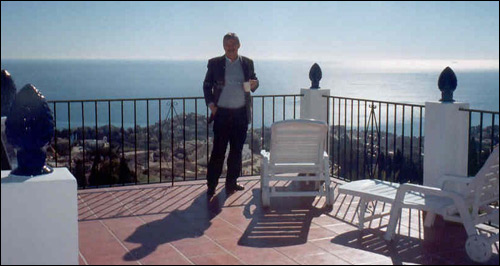
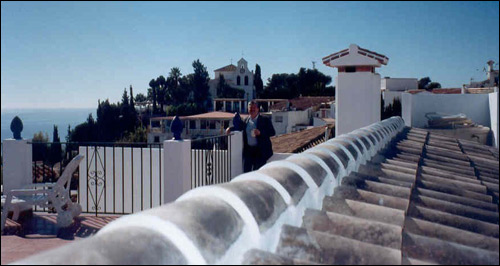

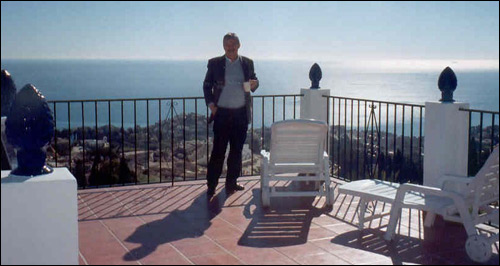
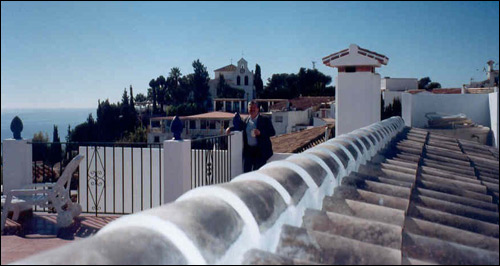

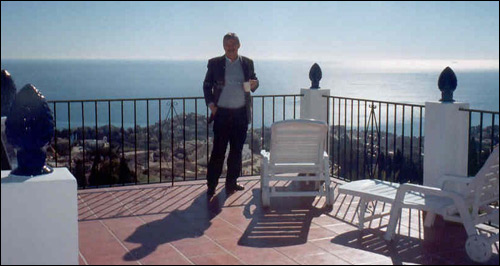
No hay comentarios:
Publicar un comentario